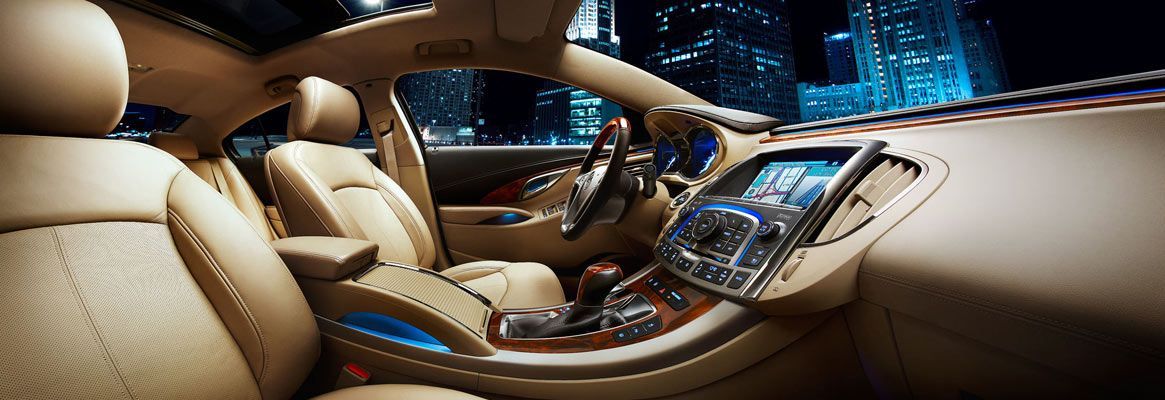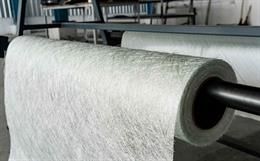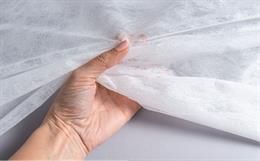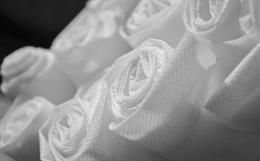Abstract
Finding methods to provide a quiet passenger compartment ina car are highly sought after by automobile manufacturers. The ability toreduce noise inside the vehicle enhances the perceived value of the vehicle tothe consumer and offers a competitive advantage to the manufacturer.
Several methods to reduce noise and its sources areemployed, one of which reduces noise in the passenger compartment using soundabsorbing materials attached to various components such as doors, quarterpanels, trunk sides and floors, headliners and others.
This study attempts to quantify the characteristics ofseveral cellulosic-based nonwovens to act as efficient absorbers, reducing theoverall sound level in the passenger compartment as measured by ASTM C-384"Impedance and Absorption of Acoustic Materials by the Impedance TubeMethod."
The results of testing demonstrate that each of thecellulosic-based nonwoven composites contribute to the absorptive properties of the components and are effective for overall noise reduction in the vehicle. Theindividual acoustic characteristics of the various vehicles determine the typeand amount of material required to provide the best results.
Introduction
Various blends of cellulosic-based nonwovens manufactured bythe carding and needlepunch process are tested for their ability to absorbsound energy. They are compared to targets of acoustic absorption establishedby automotive manufacturers for use with vehicle interior trim components suchas door absorbers, headliners, trunk liners and others with the goal ofreducing the noise level in the vehicle.
Discussion
The ability of a nonwoven material to absorb sound orunwanted noise in the passenger compartment of the vehicle is based ondissipation of the energy of the sound wave upon passing through the materialand being redirected by the fibers, and also upon conversion of some of theenergy into heat. The amount of original energy less the remaining unabsorbedenergy results in the measurement referred to as the absorption coefficient.This absorption coefficient is often used to rank the order of differentmaterials to reduce the noise level in the vehicle when composites of thesematerials are attached to various components in the car, such as doors,pillars, headliners and trunk compartments.
These components are typically placed between the soundsources (such as vibrating steel panels, windows passing air and tires) and thereceivers (occupants of the vehicle). While it is commonly accepted that themost effective way to reduce sound is at its source, several issues, such ascost, smooth ride and vehicle weight, make it necessary to use sound absorbingmaterials as "bandages" for noisy interiors.
For this study, the low cost, renewability, biodegradabilityand recyclability of the natural cellulosic fibers as the matrix materials,make them attractive as a potential sound-absorbing nonwoven. The carding andneedlepunch structuring process was chosen to produce the samples because ithas long been used to make padding that can be molded into shapes for attachingto the components in the vehicle (Table 1). Polypropylene fiber in the cellulosic composites make the nonwovens moldable. "Seconds" qualityof polypropylene was used in the present set of experiments to produce products at lower cost.
The cellulosic fibers chosen for the nonwovens were flax, jute, kenaf and cotton. Polypropylene was added as a carrying material in the carding and needlepunch process and can be varied in proportion with the cellulosic fibers. The weight and thickness targeted were picked based on the normal practice where glass and synthetic-based materials were used in vehicles (Table 2).
After processing the samples, each were cut into parts and inserted into the impedance tube for rank order absorption testing against commonly accepted levels for such "absorbent" materials. While each vehicle may have unique noise characteristics, the rank order of the materials is a good precursor to subsequent, more detailed, engineering of the individual materials for specific components (Figure 1).
The ASTM C-384 impedance tube testing method utilizes a tube with the nonwoven test piece at one end and a loudspeaker at the other. A microphone is moved along the length of the tube during the test, measuring the sound wave at various frequencies, calculating the amount of sound reflected by the sample compared to the original wave amplitude. The greater amount of sound absorbed results in a better material for noise reduction purposes in the vehicle (Figure 2).
The frequencies chosen for testing are those that are typically represented by the various types of noise, such as low frequency vehicle structural noise and high frequency wind or tire noise.
In each of the cellulosic-based samples tested, we see that the amount of absorption recorded, at the frequencies targeted, meet or exceed the targets, save for the flax-based and kenaf-based at the 1600 Hz frequency, and this by a relatively small (3-10%) amount. In practice, these minor differences are often made up by a small reduction in the amount of needlepunching to increase thickness (which often helps increase absorption). Other ways to increase the absorptive properties include using finer diameter fibers, lower modulus fibers and various coatings or sizings.
Summary
By using the ASTM C-384 Standard Test Method for Impedance and Absorption of Acoustical Materials by the Impedance Tube Method, it has been shown that several cellulosic-based nonwovens can be produced that have sound absorbing properties suitable for use as noise reducing components. These components can be used in the manufacture of cars that provide the quiet interior passenger compartment that the consumer desires.
Acknowledgements
The authors gratefully acknowledge Dr. Clark Welch and Eugene Blanchard of their laboratories for their helpful and constructive comments on this manuscript.
References
Ford Motor Company, 1983, Padding, Needled Reclaimed Fiber-Acoustical and Thermal.
General Motors Corp., 1992, Acoustical Performance of Noise Control Materials, GM2223M.
Hirabayashi, T., D. McCass, R., Rebart, P. Rusch, P. Saha, SAE Acoustical Materials Committee, Application of Noise Control and Heat Insulation Materials and Devices in the Automotive Industry, 1995.
ASTM C-384-90a, Standard Test Method for Impedance and Absorption of Acoustical Materials by the Impedance Tube Method, ASTM 1916 Race Street, Philadelphia, PA.
About the Author:
D.V. Parikh is associated with T.A. Calamari, USDA, ARS, SRRC, New Orleans, LA and J.C. Myatt, Janesville Products, a Unit of Jason, Inc., Norfolk, OH.
To read more articles on Textile, Industry, Technical Textile, Dyes & Chemicals, Machinery, Fashion, Apparel, Technology, Retail, Leather, Footwear & Jewellery, Software and General please visit http://articles.fibre2fashion.com
To promote your company, product and services via promotional article, follow
this link: http://www.fibre2fashion.com/services/article-writing-service/content-promotion-services.asp








